another world sounds like drastically better and i would agree wholeheartedly. legato sounds strained by comparison, where the d1 sounds effortless and powerful. davide isnt even running balanced yet
haha seems my comments above got someone riled up. maybe you should do a volume matched comparison Davide? myself i couldnt be bothered at this stage
My family just came back from Europe, so not much time for scientific comparisons, but I think I can say that the bass of the D1 are a lot richer than the Legato, and I experience a better 3D location of the instruments.
Worth the change.
D.
Worth the change.
D.
hehe yeah i didnt seriously expect you to, its just Russ, when faced with the prospect of several people preferring the NTD1 to the Legato played the card that it was louder on your build, thus subjectively better. nope, its subjectively better because its subjectively better and all of us who have built it so far, aside from opc have preferred it to the legato, which we also own, regardless of the claimed slightly better measurements
am i the only one who wishes there would be another group buy for the d1 board? i'm dying to give it a go
Lots of excitement both here and elsewhere...
After following a discussion on another thread, there are a few things I'd like to clarify and prove with actual measurements. I hope it will put a stop to some of the random numbers and claims people have been throwing out. Russ, this is addressed to you in particular. If you want to make technical claims about the Legato being better than the circuit presented here, then please post actual measurements and numbers. If you don't have proof on hand, then you're not in a position to make blanket statements (or any statement for that matter) about performance. That applies to input impedance, THD, noise, frequency response, etc.
For the record, the input impedance of the NTD1 with FQA34N20 fets and 45V rails is 2.14 ohms differential. I measure 11.80mVRMS across the output pins of the Buffalo II board with a 0dBFS signal sent to the DAC and connected to the NTD1. According to the datasheet, the DAC outputs 3.903mAP-P under these conditions, or roughly 5.52mARMS with four parallel outputs (stereo mode). Using good old R=V/I, we get about 2.14 ohms.
If you made the overall output at 0dBFS closer to 1.1VRMS, then you could halve the resistance values used, which would drop the input impedance down to about 1R.
I know it's nice to think the Legato has low input impedance, but has anyone actually measured it properly? Simulations and guesswork don't count. I want to see an actual measurement the exact same way I did above. When we have that, we can make a real comparison. This will probably be more useful than guessing what the input impedance of both circuits is, and making statements based on that.😕
I'm also expanding the above requests to all aspects of performance. I'd like to see a full set of THD+N measurements, along with IMD numbers. There's nothing to hide on my end; the NTD1 performs incredibly well and I have the actual measurements to back that up. Not simulations, not wishful thinking, and not guesswork. They're attached at the bottom of this post.
If someone wants to send me a Legato, I can measure it under the exact same conditions and then maybe we can try to draw some conclusions about why several people feel the NTD1 sounds better.
Regards,
Owen
After following a discussion on another thread, there are a few things I'd like to clarify and prove with actual measurements. I hope it will put a stop to some of the random numbers and claims people have been throwing out. Russ, this is addressed to you in particular. If you want to make technical claims about the Legato being better than the circuit presented here, then please post actual measurements and numbers. If you don't have proof on hand, then you're not in a position to make blanket statements (or any statement for that matter) about performance. That applies to input impedance, THD, noise, frequency response, etc.
For the record, the input impedance of the NTD1 with FQA34N20 fets and 45V rails is 2.14 ohms differential. I measure 11.80mVRMS across the output pins of the Buffalo II board with a 0dBFS signal sent to the DAC and connected to the NTD1. According to the datasheet, the DAC outputs 3.903mAP-P under these conditions, or roughly 5.52mARMS with four parallel outputs (stereo mode). Using good old R=V/I, we get about 2.14 ohms.
If you made the overall output at 0dBFS closer to 1.1VRMS, then you could halve the resistance values used, which would drop the input impedance down to about 1R.
I know it's nice to think the Legato has low input impedance, but has anyone actually measured it properly? Simulations and guesswork don't count. I want to see an actual measurement the exact same way I did above. When we have that, we can make a real comparison. This will probably be more useful than guessing what the input impedance of both circuits is, and making statements based on that.😕
I'm also expanding the above requests to all aspects of performance. I'd like to see a full set of THD+N measurements, along with IMD numbers. There's nothing to hide on my end; the NTD1 performs incredibly well and I have the actual measurements to back that up. Not simulations, not wishful thinking, and not guesswork. They're attached at the bottom of this post.
If someone wants to send me a Legato, I can measure it under the exact same conditions and then maybe we can try to draw some conclusions about why several people feel the NTD1 sounds better.
Regards,
Owen
Attachments
-
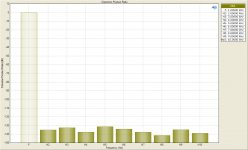 Distortion Product Ratio (-9dBFS) (0.8VRMS).png47.3 KB · Views: 758
Distortion Product Ratio (-9dBFS) (0.8VRMS).png47.3 KB · Views: 758 -
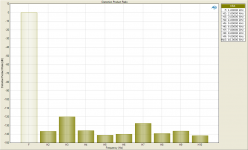 Distortion Product Ratio (-6.5dBFS) (1VRMS).png47.6 KB · Views: 747
Distortion Product Ratio (-6.5dBFS) (1VRMS).png47.6 KB · Views: 747 -
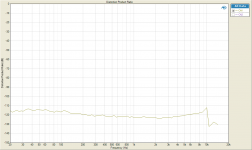 Distortion Product Ratio Sum of All.png54.7 KB · Views: 750
Distortion Product Ratio Sum of All.png54.7 KB · Views: 750 -
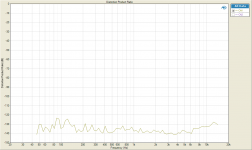 Distortion Product Ratio 2nd.png57.6 KB · Views: 738
Distortion Product Ratio 2nd.png57.6 KB · Views: 738 -
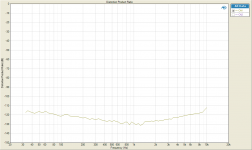 Distortion Product Ratio 3rd.png54.5 KB · Views: 726
Distortion Product Ratio 3rd.png54.5 KB · Views: 726 -
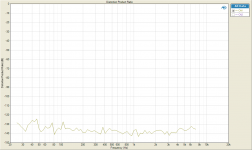 Distortion Product Ratio 4th.png57.2 KB · Views: 160
Distortion Product Ratio 4th.png57.2 KB · Views: 160 -
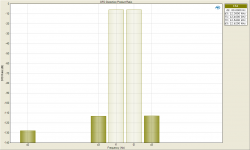 DFD Distortion Product Ratio 80-12.5k -0dBFS.png39.6 KB · Views: 155
DFD Distortion Product Ratio 80-12.5k -0dBFS.png39.6 KB · Views: 155 -
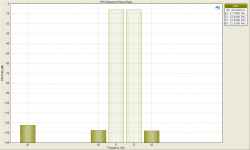 DFD Distortion Product Ratio 80-12.5k -9dBFS.png40 KB · Views: 158
DFD Distortion Product Ratio 80-12.5k -9dBFS.png40 KB · Views: 158 -
 SMPTE (IMD) Distortion Product Ratio 60-7k -0dBFS.png50 KB · Views: 138
SMPTE (IMD) Distortion Product Ratio 60-7k -0dBFS.png50 KB · Views: 138 -
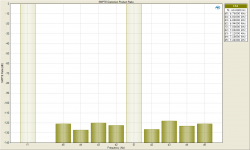 SMPTE (IMD) Distortion Product Ratio 60-7k -9dBFS.png49.8 KB · Views: 143
SMPTE (IMD) Distortion Product Ratio 60-7k -9dBFS.png49.8 KB · Views: 143
cersepn:
It has been a while since the first build, and there is a bit of a list of people, so why not...
I'll do another run of the NTD1, but it will be boards only this time. I'll start to compile a list on the other thread here:
http://www.diyaudio.com/forums/digi...ssic-pass-labs-d1-ess-dac-79.html#post2691693
Cheers,
Owen
It has been a while since the first build, and there is a bit of a list of people, so why not...
I'll do another run of the NTD1, but it will be boards only this time. I'll start to compile a list on the other thread here:
http://www.diyaudio.com/forums/digi...ssic-pass-labs-d1-ess-dac-79.html#post2691693
Cheers,
Owen
Owen,
Wow why the angst?
I don't believe I ever claimed anything was "better" or "worse". That is a value judgment. I simply explained my personal design choices and why I believe they are right for my application. I certainly don't care if someone prefers one output stage over the other. And my choices don't mean yours are wrong. They are simply different.
I would be very pleased if you measure a legato 3 as I do not have access to the gear you do. Remember I am an amateur myself, and I certainly don't mind being schooled. 🙂
I am not sure why all of the ire all of the sudden. I have nothing but respect for your good work.
Cheers!
Russ
Wow why the angst?
I don't believe I ever claimed anything was "better" or "worse". That is a value judgment. I simply explained my personal design choices and why I believe they are right for my application. I certainly don't care if someone prefers one output stage over the other. And my choices don't mean yours are wrong. They are simply different.
I would be very pleased if you measure a legato 3 as I do not have access to the gear you do. Remember I am an amateur myself, and I certainly don't mind being schooled. 🙂
I am not sure why all of the ire all of the sudden. I have nothing but respect for your good work.
Cheers!
Russ
Hi Russ,
It's not angst as such... I just like to minimize unsupported claims. I'm not upset, I just don't want to spread misinformation one way or another.
If your claim is that input impedance is important to the performance of the ESS DAC, then it would be nice to see the specifics. If there's a difference in distortion between a <1R and 2R load impedance, I'd really like to see the actual measurement to support that. I'm not saying it isn't true, I'd just like to see the proof rather than hear it second hand. People here get really hung up on stuff like that, and it can be misleading if its not true. This applies even more if it's part of a statement that implies your product is better by virtue of the claim. See where I'm going with this?
If you'd like me to run a Legato through the AP, I'd be more than happy to give it a go. As long as I can mount it to my BII, we should be able to get a very fair comparison between the two. Send me a note offline and we can make arrangements.
Regards,
Owen
It's not angst as such... I just like to minimize unsupported claims. I'm not upset, I just don't want to spread misinformation one way or another.
If your claim is that input impedance is important to the performance of the ESS DAC, then it would be nice to see the specifics. If there's a difference in distortion between a <1R and 2R load impedance, I'd really like to see the actual measurement to support that. I'm not saying it isn't true, I'd just like to see the proof rather than hear it second hand. People here get really hung up on stuff like that, and it can be misleading if its not true. This applies even more if it's part of a statement that implies your product is better by virtue of the claim. See where I'm going with this?
If you'd like me to run a Legato through the AP, I'd be more than happy to give it a go. As long as I can mount it to my BII, we should be able to get a very fair comparison between the two. Send me a note offline and we can make arrangements.
Regards,
Owen
Owen,
Oh and why is this coming up now exactly?
Let me clear. I am not the one who originally said that even a low impedance makes a difference. if you read through the original ES9008 thread and the output stage design guidelines on the ESS site you will see where Dustin mentions it. I also never claimed to have scientifically proven the degree to which 1 or 2 ohms makes a difference. I did say I would like to measure it at some point, and I firmly believe this result could vary depending on the rest of the circuit under test. One cct may measure very well with 2ohms and another not so well. So in fact all I have ever said is that I tend to agree with the chip designer and that I don't have the equipment to disprove him even if I cared to. 🙂 I am also not the only designer who has said precisely the same thing. It does matter, but to what degree? Who is to say?
I did say that for my part I did not like the single FET approach as much. That is a personal opinion. Its a simpler circuit, if I liked it as well I would have used it. I do believe the lower impedance approach *sounds better*. So based on my personal experience I went with what I liked best. There is nothing more to it than that.
One person did measure the Legato (early version) and reported -118db THD. I can't confirm or deny it. I didn't do it. 🙂
I have made no performance claims other than what I observed from simulation and what others have measured.
I would be glad to work with you, I have nothing to hide.
What I can say is that in the past measured results have actually very closely matched my simulated results.
Today I will put the Legato 3 on the scope and measure the inputs at 0dbfs DAC output. I did this once when I first did the legato 1, but the cct has improved since then. If I remember correctly the result back then < 3mvpp peak to peak differential.
In any case I certainly would not have gotten the impression there was no angst. But if you say there is none, I suppose I can trust that is the case. 😎
BTW I love to design things, but I am not an engineer (nor have I ever claimed such) with a full set engineers tools. I make the best use I can of what I have. I start with what makes sense based on what I know and learn, and then I work to make it sound as good as I can. Every experience brings a new depth of learning. That is why I do this.
I have always supported your project, I don't get the same feeling in return.
I think the problems may have arisen when I mentioned that I had tried the D1 approach and while I like it I was not completely satisfied. if that offended you I apologize. There was no such intent.
Cheers!
Russ
Oh and why is this coming up now exactly?
Let me clear. I am not the one who originally said that even a low impedance makes a difference. if you read through the original ES9008 thread and the output stage design guidelines on the ESS site you will see where Dustin mentions it. I also never claimed to have scientifically proven the degree to which 1 or 2 ohms makes a difference. I did say I would like to measure it at some point, and I firmly believe this result could vary depending on the rest of the circuit under test. One cct may measure very well with 2ohms and another not so well. So in fact all I have ever said is that I tend to agree with the chip designer and that I don't have the equipment to disprove him even if I cared to. 🙂 I am also not the only designer who has said precisely the same thing. It does matter, but to what degree? Who is to say?
I did say that for my part I did not like the single FET approach as much. That is a personal opinion. Its a simpler circuit, if I liked it as well I would have used it. I do believe the lower impedance approach *sounds better*. So based on my personal experience I went with what I liked best. There is nothing more to it than that.
One person did measure the Legato (early version) and reported -118db THD. I can't confirm or deny it. I didn't do it. 🙂
I have made no performance claims other than what I observed from simulation and what others have measured.
I would be glad to work with you, I have nothing to hide.
What I can say is that in the past measured results have actually very closely matched my simulated results.
Today I will put the Legato 3 on the scope and measure the inputs at 0dbfs DAC output. I did this once when I first did the legato 1, but the cct has improved since then. If I remember correctly the result back then < 3mvpp peak to peak differential.
In any case I certainly would not have gotten the impression there was no angst. But if you say there is none, I suppose I can trust that is the case. 😎
BTW I love to design things, but I am not an engineer (nor have I ever claimed such) with a full set engineers tools. I make the best use I can of what I have. I start with what makes sense based on what I know and learn, and then I work to make it sound as good as I can. Every experience brings a new depth of learning. That is why I do this.
I have always supported your project, I don't get the same feeling in return.
I think the problems may have arisen when I mentioned that I had tried the D1 approach and while I like it I was not completely satisfied. if that offended you I apologize. There was no such intent.
Cheers!
Russ
Last edited:
Hi Russ,
It's coming up now because of your post yesterday:
http://www.diyaudio.com/forums/digi...-iii-dac-tube-output-stage-3.html#post2714833
That's a very long-winded way of saying you really don't know if there's a difference between 0.5R and 2R, but you took the liberty of implying there was here:
Which is what I took issue with.
That's a very loaded statement as well. Distortion simulation is very tricky, and sometimes results can line up, other times they're not even close. I have some great examples of the latter. The truth is that there's no way to tell until you measure the real thing.
I did buy a BII didn't I? Nothing says "I support you" like cold hard cash 🙂
I really do appreciate all the work you do, and I think you turn out some great products at fair prices. I just take issue when you overstep the boundary and turn from Technical Ross into Salesman Ross. One I appreciate, the other I do not. This is the sort of thing I'm talking about:
http://www.diyaudio.com/forums/digi...ssic-pass-labs-d1-ess-dac-30.html#post2317699
If you want to support, then just say "Great Work!" and if you have meaningful technical input, then just say "Hey, you can improve the distortion performance by lowering the input impedance of your circuit".
When you say things like:
you clearly have other intentions.
There is no problem there, and you're certainly welcome to your opinion. I do somewhat take issue with fact that you're drawing a conclusion based on circuit other than the one presented here, but that's beside the point. Not all common base amplifiers are created equal, and unless you tried exactly what I've settled on here, then it's not really fair to draw conclusions now is it? With higher resistance values, lower voltage and different mosfets, who knows what you'll get.
Regards,
Owen
It's coming up now because of your post yesterday:
http://www.diyaudio.com/forums/digi...-iii-dac-tube-output-stage-3.html#post2714833
Let me clear. I am not the one who originally said that even a low impedance makes a difference. if you read through the original ES9008 thread and the output stage design guidelines on the ESS site you will see where Dustin mentions it. I also never claimed to have scientifically proven the degree to which 1 or 2 ohms makes a difference. I did say I would like to measure it at some point, and I firmly believe this result could vary depending on the rest of the circuit under test. One cct may measure very well with 2ohms and another not so well. So in fact all I have ever said is that I tend to agree with the chip designer and that I don't have the equipment to disprove him even if I cared to. I am also not the only designer who has said precisely the same thing. It does matter, but to what degree? Who is to say?
I did say that for my part I did not like the single FET approach as much. That is a personal opinion. Its a simpler circuit, if I liked it as well I would have used it. I do believe the lower impedance approach *sounds better*. So based on my personal experience I went with what I liked best. There is nothing more to it than that.
That's a very long-winded way of saying you really don't know if there's a difference between 0.5R and 2R, but you took the liberty of implying there was here:
Here is why, in terms of scale, we are talking logarithmic. and it is the voltage modulation at the DAC outputs that produces increasing distortion. It does not take much to make it measurable. In fact just 1 ohm can produce measurable degradation in THD. Now is it much? no. Maybe 2db. But it is real.
Which is what I took issue with.
What I can say is that in the past measured results have actually very closely matched my simulated results.
That's a very loaded statement as well. Distortion simulation is very tricky, and sometimes results can line up, other times they're not even close. I have some great examples of the latter. The truth is that there's no way to tell until you measure the real thing.
I have always supported your project, I don't get the same feeling in return.
I did buy a BII didn't I? Nothing says "I support you" like cold hard cash 🙂
I really do appreciate all the work you do, and I think you turn out some great products at fair prices. I just take issue when you overstep the boundary and turn from Technical Ross into Salesman Ross. One I appreciate, the other I do not. This is the sort of thing I'm talking about:
http://www.diyaudio.com/forums/digi...ssic-pass-labs-d1-ess-dac-30.html#post2317699
If you want to support, then just say "Great Work!" and if you have meaningful technical input, then just say "Hey, you can improve the distortion performance by lowering the input impedance of your circuit".
When you say things like:
FWIW... I already have designed a stackable BUF-II version of a single FET per side common gate I/V PCB, but I had no idea there was any real interest in it since Legato is really IMO a better fit.
you clearly have other intentions.
I think the problems may have arisen when I mentioned that I had tried the D1 approach and while I like it I was not completely satisfied. if that offended you I apologize. There was no such intent.
There is no problem there, and you're certainly welcome to your opinion. I do somewhat take issue with fact that you're drawing a conclusion based on circuit other than the one presented here, but that's beside the point. Not all common base amplifiers are created equal, and unless you tried exactly what I've settled on here, then it's not really fair to draw conclusions now is it? With higher resistance values, lower voltage and different mosfets, who knows what you'll get.
Regards,
Owen
Owen,
Fair enough I can see how you might see it that way, but I really had no intention of trying to sell anything on this thread at all.
You and I both are not doing anything particularly new here.
I have tried exactly what you are doing (yes high voltage, high gm devices and all) along with many other approaches. Like I said I think the approach sounds great, I personally was just not completely satisfied yet, and I thought the practical issues would be an impediment to many.
I said what I said about the small amount of impedance making a difference based on personal listening experience and based on taking what Dustin said to me and on the forum to its logical conclusion. I don't mind in the least saying some of it is speculation, but most of it is also based on hard work and experience. For example we had a third party measure IVY-III (name omitted to protect the innocent) and found exactly that. Now I understand that is a completely different beast, that is why I offered the caveat that not all circuits may respond in the same way.
I am not trying to sell anything here, but I think it perfectly natural to talk about ideas that influence designs. The only reason I even mentioned it was because this design was being used for Buf II and because I had a lot of interest in the topic itself for quite some time. I was looking forward to seeing how people received it.
BTW I just measured the inputs of legato 3.1 at 1khz 0dbfs and got 2.2mvpp. Not as low as IVY-III but still pretty good. 🙂
Cheers!
Russ
Fair enough I can see how you might see it that way, but I really had no intention of trying to sell anything on this thread at all.
You and I both are not doing anything particularly new here.
I have tried exactly what you are doing (yes high voltage, high gm devices and all) along with many other approaches. Like I said I think the approach sounds great, I personally was just not completely satisfied yet, and I thought the practical issues would be an impediment to many.
I said what I said about the small amount of impedance making a difference based on personal listening experience and based on taking what Dustin said to me and on the forum to its logical conclusion. I don't mind in the least saying some of it is speculation, but most of it is also based on hard work and experience. For example we had a third party measure IVY-III (name omitted to protect the innocent) and found exactly that. Now I understand that is a completely different beast, that is why I offered the caveat that not all circuits may respond in the same way.
I am not trying to sell anything here, but I think it perfectly natural to talk about ideas that influence designs. The only reason I even mentioned it was because this design was being used for Buf II and because I had a lot of interest in the topic itself for quite some time. I was looking forward to seeing how people received it.
BTW I just measured the inputs of legato 3.1 at 1khz 0dbfs and got 2.2mvpp. Not as low as IVY-III but still pretty good. 🙂
Cheers!
Russ
Last edited:
Hi Russ,
I appreciate you looking at it from my point of view.
I know neither of us are creating earth shattering new ideas, and all of this has been done before, sometimes a depressingly long time ago. At this point it's about baby steps for me... getting the job done one small improvement at a time.
That's an impressively low input impedance for the Legato, and no doubt keeps the ESS DAC in its happy zone. Thanks for taking the time to verify it. My offer to run the Legato (or anything else you might be curious about) through the AP still stands if you're interested. You know where to find me.
Regards,
Owen
I appreciate you looking at it from my point of view.
I know neither of us are creating earth shattering new ideas, and all of this has been done before, sometimes a depressingly long time ago. At this point it's about baby steps for me... getting the job done one small improvement at a time.
That's an impressively low input impedance for the Legato, and no doubt keeps the ESS DAC in its happy zone. Thanks for taking the time to verify it. My offer to run the Legato (or anything else you might be curious about) through the AP still stands if you're interested. You know where to find me.
Regards,
Owen
Guys,
Don't take it so seriously. The legato and Owen D1 maybe from electronic point of view are similar, but from user point of view they are different beasts.
Most of DIY user do things to have good gears, but mostly to do things and learn new things. Legato is a wonderful project, that you can make it sing in a couple of hours, even if you are a beginner. It's hard to screw up things there, and allow many people to access a great DAC and to fully enjoy. This is an incredible merit of the kit. Still there are things I did not understand (and I did not ask yet).
You cannot say the same of Owen D1, and this is exactly why I did it. I had to start learning how to recognize SMD components, going on to learn how to solder them, learning about characteristics of tin, that in other applications are irrelevant. I took it as a challenge for my manual capabilities, and to learn new things. Some people had to sell the kit, as it was too difficult, others had to ask help as they could not even see the components. And still, I understand 10% of what Qusp had to go through to match the MOSFET.
I think a proof of this is that most of us have both kits. The performances of both kits are so high, that I think the preferences of one over the other are fully personal, a bit like wine.
It's interesting to see measurements, mostly if done with great equipment like the AP. For me is always a bit frustrating to do measurements, as nothing works as it should, but I Think nobody would judge the sound over a 2 dB difference in THD down at -160 dB. I wish I could hear that.
I commented in favor of the D1, and this could be real, or only a psychologic effect, as I had my last toy done, but it could also be that the implementation is very different.
My legato is powered with two salas regulators with a wimpy transformer, shared also with the buffalo. The D1 has four toroids, left and right supplies are separate and the Balanced to Unbalanced converter is done with "the wire" that I guess have better opamp than the legato2, as TP upgraded that part in the legato3. All this difference can matter!
The point I wanted to make is that I do not see room for competition here, maybe for collaboration. I also don't think that the commercial interest matters here. As I pointed out the market point of this thing is so different, and you are both too busy, so I don't think any of you is fishing for more customers. Beside the fact that more D1 means more Buffalo, so you are helping each other anyway.
As Nelson said:"This is the entertainment business, so I hope everybody is having good time".
Best Regards,
Davide
Don't take it so seriously. The legato and Owen D1 maybe from electronic point of view are similar, but from user point of view they are different beasts.
Most of DIY user do things to have good gears, but mostly to do things and learn new things. Legato is a wonderful project, that you can make it sing in a couple of hours, even if you are a beginner. It's hard to screw up things there, and allow many people to access a great DAC and to fully enjoy. This is an incredible merit of the kit. Still there are things I did not understand (and I did not ask yet).
You cannot say the same of Owen D1, and this is exactly why I did it. I had to start learning how to recognize SMD components, going on to learn how to solder them, learning about characteristics of tin, that in other applications are irrelevant. I took it as a challenge for my manual capabilities, and to learn new things. Some people had to sell the kit, as it was too difficult, others had to ask help as they could not even see the components. And still, I understand 10% of what Qusp had to go through to match the MOSFET.
I think a proof of this is that most of us have both kits. The performances of both kits are so high, that I think the preferences of one over the other are fully personal, a bit like wine.
It's interesting to see measurements, mostly if done with great equipment like the AP. For me is always a bit frustrating to do measurements, as nothing works as it should, but I Think nobody would judge the sound over a 2 dB difference in THD down at -160 dB. I wish I could hear that.
I commented in favor of the D1, and this could be real, or only a psychologic effect, as I had my last toy done, but it could also be that the implementation is very different.
My legato is powered with two salas regulators with a wimpy transformer, shared also with the buffalo. The D1 has four toroids, left and right supplies are separate and the Balanced to Unbalanced converter is done with "the wire" that I guess have better opamp than the legato2, as TP upgraded that part in the legato3. All this difference can matter!
The point I wanted to make is that I do not see room for competition here, maybe for collaboration. I also don't think that the commercial interest matters here. As I pointed out the market point of this thing is so different, and you are both too busy, so I don't think any of you is fishing for more customers. Beside the fact that more D1 means more Buffalo, so you are helping each other anyway.
As Nelson said:"This is the entertainment business, so I hope everybody is having good time".
Best Regards,
Davide
Can't wait to get my hands on one of those boards!!! 😀
I'm getting jealous of all of you completing the build...
Just one question... Can we do dual mono BII with two boards?
Do
I'm getting jealous of all of you completing the build...
Just one question... Can we do dual mono BII with two boards?
Do
you can indeed, but it requires a pretty serious commitment wrt casework and layout as the NTD1 is so large with the heatsink. if you can make a custom enclosure, or have one suitab;e for a largish class A power amp, or just one with a really chunky floor and walls you might do it that way. dual mono you will have to find a way to get rid of 100W of heat
you can indeed, but it requires a pretty serious commitment wrt casework and layout as the NTD1 is so large with the heatsink. if you can make a custom enclosure, or have one suitab;e for a largish class A power amp, or just one with a really chunky floor and walls you might do it that way. dual mono you will have to find a way to get rid of 100W of heat
Do you see any benefit to it? On the audible spectrum...
This is a massive heat dissipation!
And I'm actually starting to build a Aleph X... Can you imagine how much AC I will need in summer! 🙂
Do
hmm, a little, tbh i would be more likely to run the 2 dacs in parallel and drop the IV and gain resistors, or leave it the same if you have made your own amps and can make sure their inputs can handle it. the crosstalk is so minimal with well design balanced gear that dual mono is not really needed imo. can you tell the difference between
~-114 and -117 db THD+N?
haha yeah well i have about 2.5kw in power amps i'm in the middle of building including an Aleph JX its 30c in the shade here many days without the 'audio-heating'
~-114 and -117 db THD+N?
haha yeah well i have about 2.5kw in power amps i'm in the middle of building including an Aleph JX its 30c in the shade here many days without the 'audio-heating'
hmm, a little, tbh i would be more likely to run the 2 dacs in parallel and drop the IV and gain resistors, or leave it the same if you have made your own amps and can make sure their inputs can handle it. the crosstalk is so minimal with well design balanced gear that dual mono is not really needed imo. can you tell the difference between
~-114 and -117 db THD+N?
haha yeah well i have about 2.5kw in power amps i'm in the middle of building including an Aleph JX its 30c in the shade here many days without the 'audio-heating'
What's the difference between Aleph X and the JX, if you don't mind me asking?
Running the DACs in parallel is just a matter of stacking them on top of each others?
I might just use one DAC for this and have another one left to play with!
Ciao!
Do
- Home
- Source & Line
- Digital Line Level
- Build Thread - A New Take on the Classic Pass Labs D1 with an ESS Dac